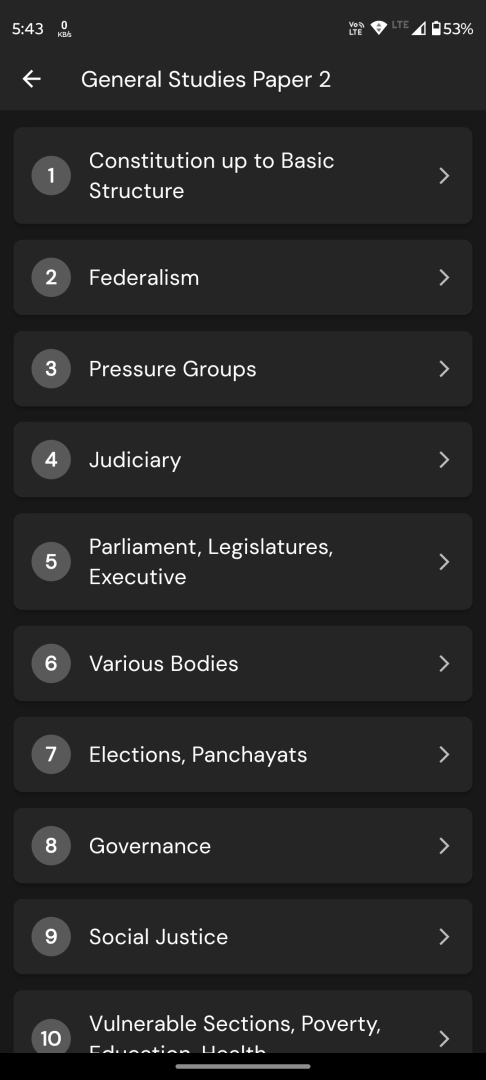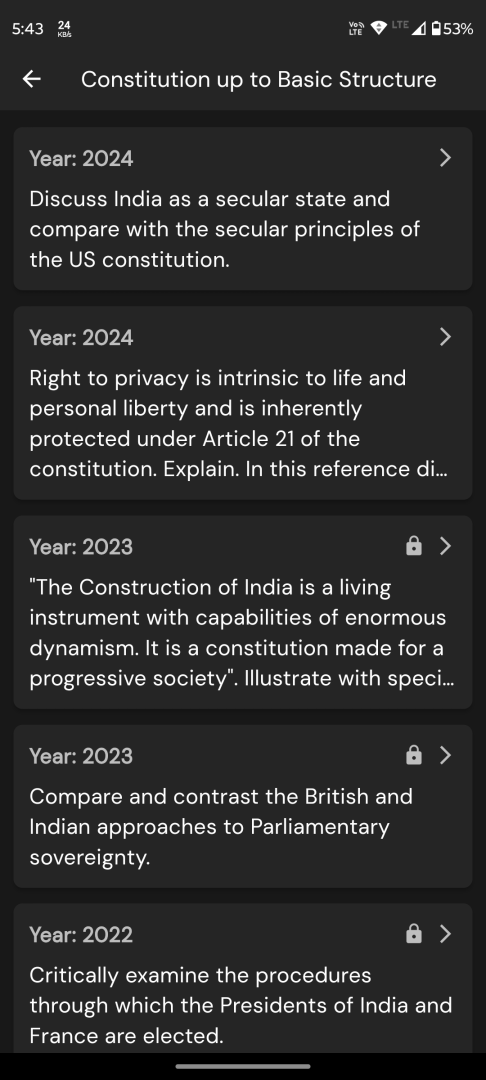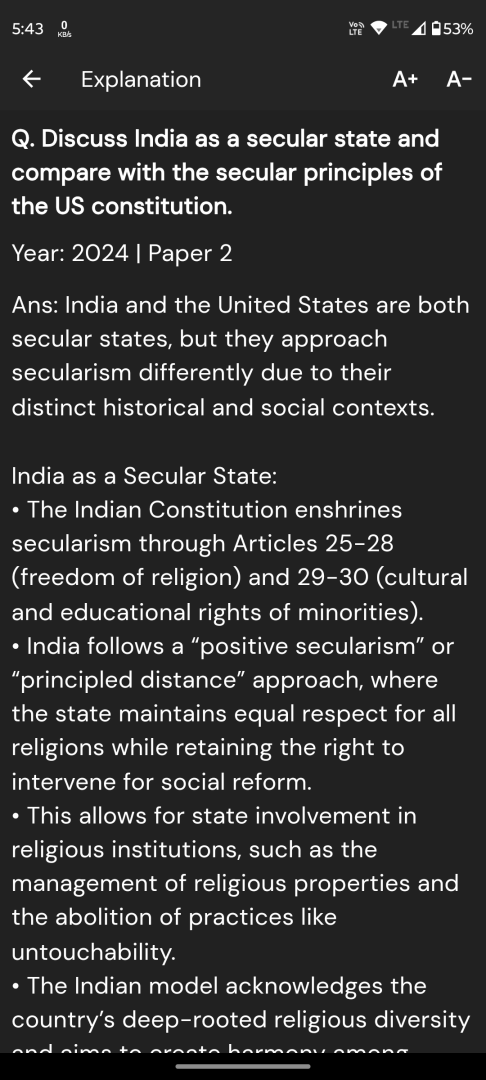Q. Let p + q = 10, where p, q are integers.
Value-I = Maximum value of p × q when p, q are positive integers.
Value-II = Maximum value of p × q when p ≥ -6, q ≥ -4.
Which one of the following is correct?
(a) Value-I < Value-II
(b) Value-II < Value-I
(c) Value-I = Value-II
(d) Cannot be determined due to insufficient data
Correct Answer : (c) Value-I = Value-II
UPSC Prelims 2025 CSAT
Explanation :
We are given p + q = 10, where p and q are integers.
Value-I: Maximum of p·q when p, q are positive integers
1. Positive integers mean p ≥ 1 and q ≥ 1.
2. Since p + q = 10, possible pairs (p,q) are:
(1,9) → 1·9 = 9
(2,8) → 2·8 = 16
(3,7) → 3·7 = 21
(4,6) → 4·6 = 24
(5,5) → 5·5 = 25
(6,4) etc. (symmetric, same products).
3. The maximum product among these is 25 (at p = 5, q = 5).
So Value-I = 25.
Value-II: Maximum of p·q when p ≥ –6, q ≥ –4 (still with p + q = 10)
1. From p + q = 10, we have q = 10 – p.
2. The constraint q ≥ –4 gives 10 – p ≥ –4 ⇒ p ≤ 14.
Combined with p ≥ –6, we get p ∈ {–6, –5, …, 14}.
3. The product is
p·q = p(10 – p) = –p² + 10p,
which is a downward-opening parabola in p.
4. The vertex of –p² + 10p occurs at p = (10)/(2) = 5, giving
p·q = 5·(10 – 5) = 25.
5. Checking the endpoints (p = –6 or p = 14) yields negative products, so the maximum is indeed 25 at p = 5, q = 5.
So Value-II = 25.
Comparison: Value-I = 25 and Value-II = 25, hence
Answer: (c) Value-I = Value-II.





